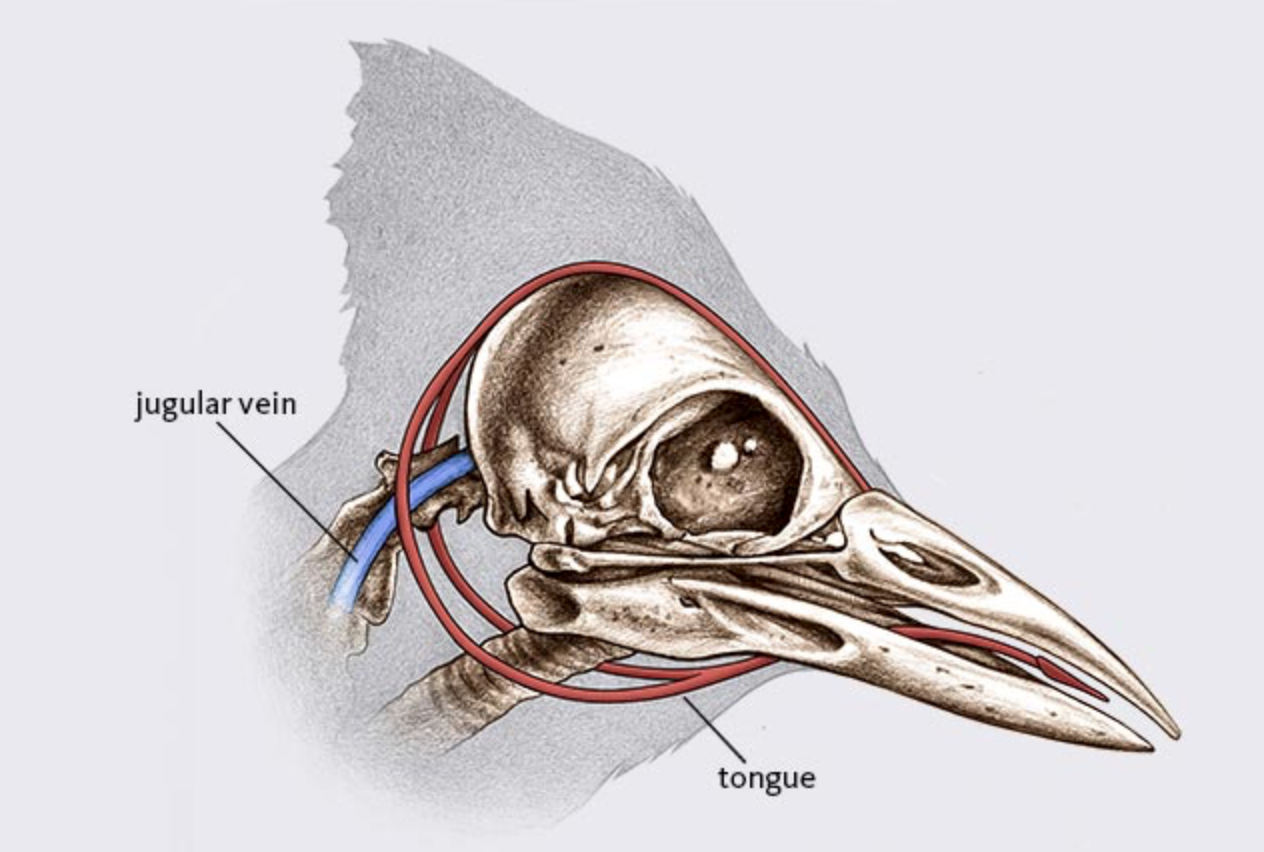On my last hike, I found a giant white pine with fresh woodpecker gouges riddled through a two-meter section at eye level. Taking a closer look, I saw the fresh inner pulp with the tree’s sap heavily flowing down the trunk. I must have missed the avian forager by a day or two. On the way home, I started to think about the awesome encounters I had while hiking through the different sections of a mixed forest in NY. Out of all the fungi, mammals, insects, amphibians, plants, and geologic features I saw, I kept revisiting that white pine in my head. I know that bird diversity coincides with forest diversity, but this sight reinforced the idea of functional diversity and how one species can have a large role in the ecosystems where they live. Birds enhance forest diversity with all of their seed dispersal, and predatory roles, but birds that cause large wounds in otherwise healthy, mature trees play even more of a keystone role in ecosystems around the world.
Woodpeckers are within the bird family Picidae, which is made up of 240 species spread all over the world. You can find them everywhere except for Australia, New Zealand, New Guinea, Madagascar and the really cold places near the poles. Many of these species specialize in arboreal insect extraction by forcefully hammering their beaks past tree bark into the sapwood. A few species within the family have followed a different evolutionary trajectory by making these holes, but only feeding on the tree’s sap. Using this unique feeding ecology puts massive amounts of stress on their bodies. While pecking, their heads rattle at around 1,000-1,500 times the force of gravity (1000-1500 g)!
Fresh woodpecker wounds.
Woodpecker global distribution. Mikusiński 2006.
Woodpeckers are within the bird family Picidae, which is made up of 240 species spread all over the world. You can find them everywhere except for Australia, New Zealand, New Guinea, Madagascar and the really cold places near the poles. Many of these species specialize in arboreal insect extraction by forcefully hammering their beaks past tree bark into the sapwood. A few species within the family have followed a different evolutionary trajectory by making these holes, but only feeding on the tree’s sap. Using this unique feeding ecology puts massive amounts of stress on their bodies. While pecking, their heads rattle at around 1,000-1,500 times the force of gravity (1000-1500 g)!
Over time, a series of adaptations followed suite, ultimately aiding the efficiency of woodpecker foraging. Their zygodactyl feet (see picture) allow the birds to walk up trees, and give them a sound footing while its reinforced, 3-layered beak can withstand the large forces at play. My favorite adaptations deal with the protection of the bird’s most important organ; its brain. I just recently learned that their tongues actually wrap around their skull thereby dissipating and directing the energy around the brain. Also, positioned in the forehead and back the skull lies a sponge-like bone that absorb much of the force generated by the repeated impacts. Even with all of the bird’s adaptations, these woodpeckers still have physiological limitations. The next time you hear or see a woodpecker, take note of the short bursts of drilling, instead of continuous repeated strikes. While foraging, birds need to rest not because they’re tired, but to actually give time for their heads to cool down, as the repeated impacts heat up these constituent parts.
Zygodactyl feet
Woodpecker tongues wrap around their skull dissipating and directing the energy around the brain.
After about 25 million years of evolution fine-tuning woodpeckers into tree-living-insect scavenging machines, these avian insectivores started interacting with their ecosystems as keystone species. These rather large tree wounds provide opportunistic fungal spores with a place to germinate and grow, ultimately enhancing forest turnover and decomposition. Woodboring insects select larger, more mature trees since these individuals offer more protection and contain larger stores of potential food. This makes mature trees more vulnerable to this type of predation, permitting more recruitment as younger trees soon fill the void left by the deceased mature trees. Additionally, most woodpeckers excavate holes as nesting sites too, and once these family units move on, these old nests provide nest sites for other bird species that can’t make their own wood excavated nests.
A study conducted in 2004, by Kerry Farris and her team set off to better understand the relationship between this woodpecker feeding ecology and decomposition rates in Southern Oregon forests dominated by ponderosa pine. After sampling woodpecker wound riddled trees as well as the birds themselves, these researchers found some rather intriguing results. The trees they drilled from had significantly lower wood densities. With less dense wood, trees become more vulnerable to a series of biotic and abiotic factors. Most interestingly still, is the fact these researchers found a wide diversity of wood decomposing fungi on their beaks. This research revealed that woodpeckers both mechanically, and biologically enhance tree decomposition.
Pileated woodpecker (Dryocopus pileatus).
Over millennia, woodpeckers have gone through a series of adaptive radiations. They have successfully filled this feeding niche, and have been playing rather influential roles in ecosystems around the world. Woodpeckers increase forest turnover and decomposition rates, as the mature trees they feed from become both mechanically broken down by the bird’s drilling action, and enzymatically, as they vector a diverse assembly of saprophytic fungi to fresh tree wounds. My initial observation led me to find out how these medium to small insect feeding birds interact with the forests they live in on a massive scale. Remember, to look and listen closely on your next hike, as the forests we love so much have so much say.







